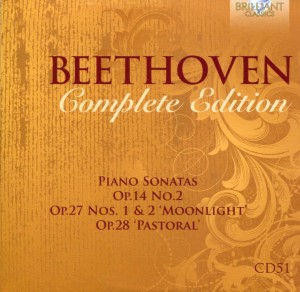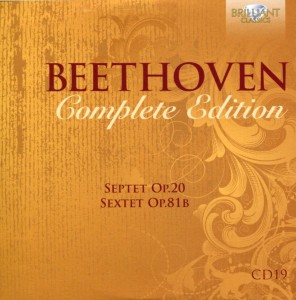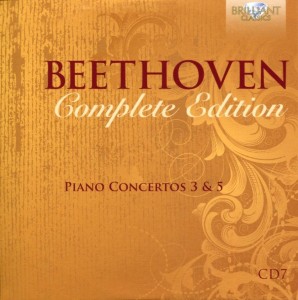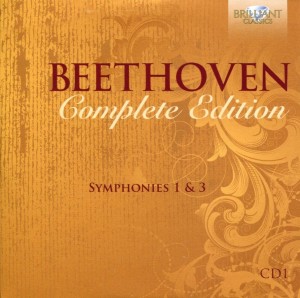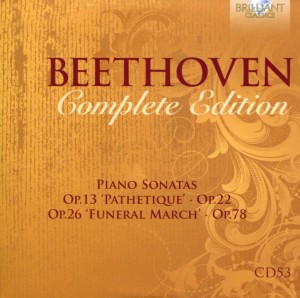 Today’s CD, like so many others, features some of Beethoven’s best work – at least, to my ears.
Today’s CD, like so many others, features some of Beethoven’s best work – at least, to my ears.
For example, the first composition – Piano Sonata No. 8 in C Minor Op. 13 “Pathetique,” which is analyzed on Wikipedia in this entry:
Ludwig van Beethoven’s Piano Sonata No. 8 in C minor, Op. 13, commonly known as Sonata Pathétique, was written in 1798 when the composer was 27 years old, and was published in 1799. Beethoven dedicated the work to his friend Prince Karl von Lichnowsky. Although commonly thought to be one of the few works to be named by the composer himself, it was actually named Grande sonate pathétique (to Beethoven’s liking) by the publisher, who was impressed by the sonata’s tragic sonorities.
Prominent musicologists debate whether or not the Pathétique may have been inspired by Mozart’s piano sonata K. 457, since both compositions are in C minor and have three very similar movements. The second movement, “Adagio cantabile”, especially, makes use of a theme remarkably similar to that of the spacious second movement of Mozart’s sonata. However, Beethoven’s sonata uses a unique motif line throughout, a major difference from Haydn or Mozart’s creation.
This sounds more like Beethoven than the pieces he dedicated to Haydn. It’s dynamic, with an emphasis on introspection and melancholy.
Coincidentally, as I was listening to this piece, I wondered if Continue reading

